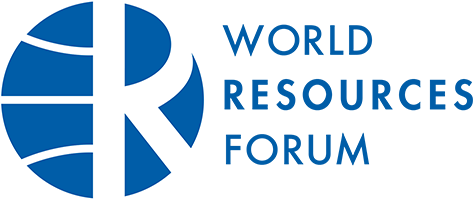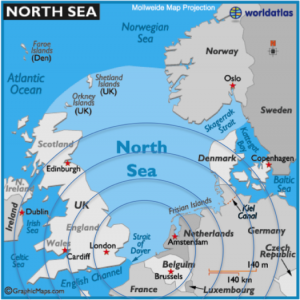World Resource Forum 2015: Workshops and Scientific Sessions
Workshop Organiser: Flemish OVAM and Dutch Ministry of Infrastructure and Environment (I&M)
· Workshop Chair: Dr. Dirk-Jan Koch, Special Envoy Natural Resources from the Ministry of Foreign Affairs
· Date and Time: Wednesday 14, 12h00 – 13h50
· Room: Sertig
Introduction
Public – Private partnerships are a must when creating a circular economy. In this workshop everything melts together: we show you how we link top-down and bottom-up approaches. We present you our vision of a framework for moving from a waste oriented society to a materials oriented society. And we gladly offer you an insight view of our best practices, open for further exploration and discussion.
I. Framework
Systemic change: from a waste society towards a materials society – by Jorn Verbeeck OVAM (Flanders):
With its open economy and high dependency on import of resources, the region of Flanders and its Public Waste & Materials Agency (OVAM) in 2011 launched the public-private Flanders’ Materials Programme (FMP) to accelerate the transition towards a circular economy and develop smart specialisation strategies within a EU framework. Building on its frontrunning position in separate waste collection and recycling, the FMP aims at streamlining the multitude of public and private initiatives within the field of sustainable materials management and activating all actors involved. The FMP combines long-term vision development (Plan C, the Flemish transition network for SMM), policy-relevant research (via the Policy Research Centre Sustainable Materials Management – SuMMa) and concrete actions (in Agenda 2020).
Instrument for systemic change: Green Deals – by Vincent van der Werff Ministry of I&M (The Netherlands):
Innovative parties in society often encounter barriers, for example when they can’t find cooperation partners or because regulation seems to obstructs promising and innovative developments. With the Green Deal approach the Dutch central government facilitates innovative initiatives from society by exploring regulation, supporting entry into the capital market or networks and creating a network of possible signatories Thus Green Deals empower frontrunners in businesses and civil society, where as legislation and regulation are addressing the mainstream by setting minimum standards taking laggards into account. Coalition partners in Green Deals have influence on Setting new and most importantly standards. Standards that can be used in new policy making and for better regulation.
II. Best Practises
A. Managing critical metals to sustain welfare and prosperity
Closing the WEEE-cycle: WorldLoop – by Close the Gap
Close the Gap is an international non-profit organization that aims to bridge the digital divide by offering high-quality, pre-owned computers donated by European companies to educational, medical and social projects in developing and emerging countries. ICT equipment can pose a serious environmental threat when it reaches its end-of-life. While much of the Western world has the necessary infrastructure and regulatory support to oversee proper management of e-waste, the developing world often lacks the expertise and infrastructure needed to do this. That’s why in 2009 Close the Gap launched WorldLoop, a public-private partnership to facilitate the creation of an environmentally sound e-waste management system in developing countries. Today, WorldLoop supports the end-of-life management of ICT equipment in different African countries. It strives to achieve its mission – to reduce the negative environmental impact of end-of-life ICT equipment – by helping to create accessible, environmentally sound, socially responsible and sustainable e-waste recycling solutions, and ultimately turning e-waste into a sustainable economic resource.
Study on (critical) resources in the Dutch economy – by Ton Bastein The Netherlands Organisation for Applied Scientific Research (TNO)
Presentation on a new systemic study on recourses and the effects on the Dutch economy, carried out by a consortium of TNO, EY, NEVI, HCSS en CMK . The two main objectives from the study are 1)to determine the vulnerability of the Dutch economy in relation to the resources availability, prices and the social aspects and 2) to provide action strategies for businesses (and also for governments) to mitigate the possible impact of resources vulnerabilities. One of these actions will possibly be a public-private partnership on WEEE (possibly as an international Green Deal)
B. Opening up new circular economy trade opportunities via international resource management
Flanders Recycling Hub – by Dirk Nelen VITO & Jorn Verbeeck FMP
Flanders is a front running region in sustainable materials management, as part of a circular economy. The ‘Flanders Recycling Hub’-project focuses on the most optimal recycling of complex waste streams. By gaining more in-depth insight on potential waste streams, the most optimal conditions and opportunities in sorting, separation, dismantling, remanufacturing, and the best available techniques in mechanical and chemical recycling, Flnaders aims to offer new and often critical resources for the manufacturing industry.
Together with industrial actors, knowledge and research institutes, and governmental actors, the Flanders’ Institute for Logistics and the OVAM Flanders’ Materials Programme, will detect bottlenecks which prevent closing international loops, draft a roadmap, and develop pilots to further optimize end-of-life resource management. This knowledge will also be useful to inform companies and designers in diverse sectors to adapt product and process designs to recycling possibilities and eventually also to consider reviewing business models (eg. shift to product-leasing).
North Sea Resources Roundabout Green Deal – by Freek van Eijk Acceleratio
European companies experience barriers with cross border trade of secondary resources. Regulation at EU level does not advance fast enough to grasp the potential of more secondary resources use. The North Sea Resources Roundabout aims to contribute to a circular economy in the North Sea Area, by finding solutions to barriers due to differences in national and international regulation. These barriers are amongst others related to the “waste or resource” status. The United Kingdom, Germany, France, Belgium and the Netherlands are working together to align the interpretation and controls on resource related regulations for ten priority waste flows on a “case by case” basis depending on industry needs (demand-driven approach).
C. Building a circular economy for a more dynamic and sustainable future
Sustainable Concrete Green Deal – by Stefan van Uffelen MVO Nederland
MVO Nederland is a business network that inspires, connects and strengthens companies and sectors to take far-reaching steps in the field of corporate social responsibility (CSR). MVO Netwerk Beton (Concrete Network) has program managed the Sustainable Concrete Green Deal. Main objective from the 30 partners is to improve the sustainability of the concrete supply chain: 100% sustainable concrete chain in 2050. In the Green Deal initial tangible steps have taken for the short term (2011-2015). The Green Deal Sustainable Concrete has been completed in the end of 2015. The results – e.g. study on life cycle from concrete – and the follow up – focus on reduction of CO2 emission – will be presented. For the World Business Council for Sustainable Development Cement Sustainability Initiative (WBCSD/CSI) and the world wide concrete sector, Stefan van Uffelen is developing the responsible sourcing certification system for concrete. www.concretesustainabilitycouncil.org
Dynamic Building approach – by VITO
By stimulating Innovative and Integrated Design in the building and construction sector it is possible to provide a solution to two interrelated megatrends, i.e. resource scarcity and a tendency towards worldwide megacities. Flanders and the Netherlands are compact regions, where smart urban planning is needed to foresee in optimal land use. Dynamic building can help via the development and dissemination of 4D Design strategies and guidelines, the development of design management tools based on life cycle thinking, and via the support of Building Information Modeling (BIM) tools.
In that respect we aim to set up Living Labs, based on co-creation, exploration, experimentation and evaluation of innovative ideas, scenarios and concepts in real-life use cases, bringing frontrunners and stakeholders together, often with a certain degree of protection from ruling regimes. The idea is to learn by doing, do by learning; bridging the gap from innovation to the market; co-creating effective solutions for real-life challenges, such as: the switch from empty offices, brownfields, outdated housing, segregated elderly care, and shortage of school facilities to new flexible spatial solutions. This helps to support shortage applications, integration of valuable districts, the support of demographic needs, evolutive and integrative care, and the building of adaptable and multi-use facilities.


